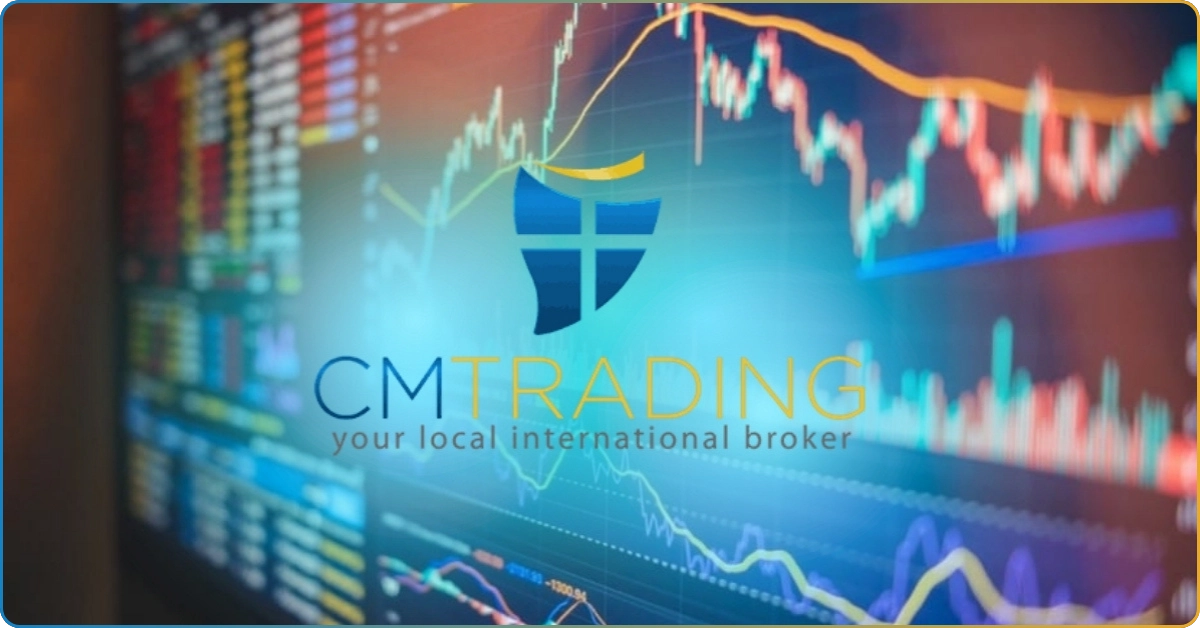Risk is native to online trading. It lurks around your trading journey, whether in the form of a market risk, psychological risk, or broker risk.
Due to these diverse risks, more than 70% forex traders suffer from investment losses each quarter. Some data also suggests that less than one out of 4 retail traders are profiting in forex trading; the rest are either unprofitable or even losing huge amount of money.
But these risks shouldn’t always be the end of everything. By being informed and empowered with the sound risk management in trading, you’ll surely make yourself safe in the financial market—and even profit from it!
Read on this article and discover the six risk management techniques used by pro traders to ensure profitability and safety in the financial market. Learn here how to execute risk management in trading like a pro!
Effective Risk Management Techniques in Trading
Think of these people: George Soros, Paul Tudor Jones, Stanley Druckenmiller, and Bill Lipschutz.
Familiar with them? Great.
Don’t have any ideas who they are? Uhm, well, they’re just among the most popular and successful traders in the past decade.
“What makes them so successful”, you ask? It’s because of their sound, polished, and foolproof trading system. They know which point to enter and exit the market, aware of the best analysis techniques, and the best practices to mitigate the risk of online trading by employing risk management techniques to their trading system.
Want to be like them? Here are the techniques that will surely boost your trading confidence when faced with potential investment losses.
Following 1% Capital Rule
Knowing your limitations can save you from any potential financial ruin.
In day trading where opening a trade is frequent, it’s an unwritten rule to always invest a maximum of 1% in a single position to keep investment losses to the lowest without denting your capital.
This rules that no traders should invest more than 1% of their capital or account balance in one position. Any amount more than that risks your capital or your trading account.
Say you have a $500,000 in your account, your position should never exceed $500. This way, you can try investing again without ruining your capital.
Some experienced traders can increase their maximum trade to 2% per position. The reason for that is to magnify the profit, however, doing so will also magnify losses of your equity.
Mastering Trading Psychology
Rash decisions won’t take you and your investment anywhere but down the drain. Remember, emotion can be a destructive force to your trading outcome.
When talking about trading your investment, you should always keep the trading psychology in check. This way, you’ll come up with rational decisions that will positively impact your trading strategies, and success in online trading.
There are two biases that you should be aware of if you want to stray away with suboptimal trading outcomes.
Cognitive Bias
Every trader has a pre-established conception about a certain trading concept that they bring to their trading strategies and decision-making. While these beliefs helped you gain profit in the past, your biased conception could break the game if you become too reliant on the provided information.
That biases towards that conception roots from your cognitive bias. This bias is your unconscious thought process that leads you to make flawed decisions and misjudge a particular strategy.
Emotional Bias
Emotion is a powerful bias that ruins the trader’s game in online trading if left uncontrolled. We want our investment to yield high returns, but at the same time, we’re scared of potential losses that might happen.
When you let your emotion get the most out of your trading, you risk yourself making impulsive decisions, poor judgement, and irrational strategies.
Here are the common emotional biases that can break your trading game:
- Fear of Missing Out (FOMO): This happens when you keep on entering a trade position because of the fear of missing potential profitable opportunities. As a result, you subject yourself to more financial risk because of impulsive decisions.
- Loss Aversion: This bias happens when you are too focused on avoiding losses than gaining opportunities. This results in holding on to your losing already losing trades, instead of closing it and opening another position for potential return.
- Confirmation Bias: This is when the trader seeks out information that confirms their pre-conceived beliefs, and in turn, ignores the information that contradicts their beliefs.
Diversifying Trades
The most common and destructive risk when trading online is the volatility nature of the financial market. One second, your position is gaining profit, then in a snap, it’s losing.
That’s why many traders opt to spread their trades across multiple assets to reduce the risk of market volatility. By diversifying your trade into multiple assets, you expose yourself to potential opportunities and high returns.
To effectively diversify your portfolio, you should look for different assets (per se different currency pairs) that have negative correlations. When you do this, telling the possible movement of the currency pairs will be easy.
Here’s a quick glance at the most common and used negative correlated currency pairs.
| USD/GBP | Negative Correlation: USD/CHF |
| GBP/USD | Negative Correlation: EUR/GBP |
| USD/CAD | Negative Correlation: AUD/JPY |
| USD/JPY | Negative Correlation: AUD/USD |
| GBP/USD | Negative Correlation: USD/JPY |
Technically, in two currencies that have negative correlation, when one currency pair moves down, the other will most likely counter it.
Say your USD/GBP position failed, but you have an open position to USD/CHF. The potential success or increase in the position of USD/CHF will balance out the impact of USD/GBP failure.
Learn more about currency correlation in this TradeGeek lesson: Traders United – Deeper Look into Currency Correlation in Forex
Scaling In Over Time
Scaling in your trade is a method where trader enters the trading position with a small trade, but then gradually increasing it over time.
This strategy minimizes the risk of financial ruin during the early stage of your entry. But then it opens your trade to higher returns if your position starts gaining profit.
It is a strategy that incorporates the concept of the 1% rule. Basically, it’s a follow-up strategy that traders use when there’s a great and profitable opportunity in the position.
To effectively incorporate scaling into your trading, make sure to do these key strategies:
- Research and plan your trade entries
- Look out for your risk/reward ratio
- Control risk with stop-loss order
Hedging the Market Risk
Hedging is the most popular risk management technique to incorporate into your trading strategies. Even seasoned traders use this technique due to its effectiveness.
When you hedge your trade, you should look at it as insurance.
Say you opened a trade position, and it’s losing. What you can do is to open another position that has a negative correlation with your existing one.
That way, you balance or offset the potential losses of your existing position. But since it’s like insurance, you have to take another financial effort to hedge your trade.
When you hedge, it reduces your potential profits. Also, most brokerage firms only allow hedging in a particular membership tier- mostly the most expensive one.
Set Up Stop-Loss Orders
A stop-loss order is your instruction to your broker to get your losing trade out of the market on your behalf. This can be a buy or sell stop order, depending on your trade direction.
When you set a stop to your trade, you basically inform your broker about the risk you’re willing to take for that specific trade. This order is programmed to the trading platform you use, and it will automatically exit your trade once the market has reached your stop-loss level, preventing you from losing money further.
A stop-loss level is the market point where you want your trade to exit. This should represent the market trend that’s unfavorable to your position.
Assume you place a buy market order for EUR/USD at 1.2000. In this case, you’ll gain profit once the market price appreciates, and you’ll run at an investment loss the moment is went down.
So, when setting a stop-loss order for this trade, you can set your stop level anywhere below 1.2000.
Note: Use support and resistance levels to set your stop-loss. Place your stop-loss below support when buying and above support when selling.
Make Trading Better and Safer with CommuniTrade
This goes without saying, it’s extremely hard to have enough trading confidence when you’re in a high-stake environment like online trading. The risk of not knowing better will put your investment at the brink of death.
This issue birthed CommuniTrade; an online trading community where all traders and trading enthusiasts can ask questions, participate in trading discussions, and learn from the first-hand experiences of verified traders. In this online community, you’ve got anything you need to succeed in online trading, including trading signals, market events, and market insights.
Here are what you’ll enjoy when you become part of the CommuniTrade:
1. Interactive and Safe Community Forum
At the CommuniTrade’s community forum, you have a safe space to share your thoughts, ask questions and trading help, and to simply interact and grow your trading network with online traders worldwide.
Here, you’ll never run short of interesting trading discussions to participate in and learn from. We keep it safe as well.
Our community is free from any spammers and marketers who’ll try to deceive you into buying and using their products and services. Our expert and dedicated moderators are always on an active lookout to ensure adherence to the community standard.
2. Insightful Discussion Board
CommuniTrade is more than your typical social media platform. Here, we make sure you’re always sharp and informed when trading the financial market. Remember, your knowledge is your biggest asset in online trading.
At the discussion board, you’ll find a wide range of educational trading discussion initiated by TRU trading experts.
3. Dedicated Spaces for Financial Instruments
The CommuniTrade is the world’s first online trading community for assets of all types. So, whether you’re a beginner forex trader or an expert commodity trader, you have a space in our community.
Here are the instrument spaces we have in CommuniTrade:
- Forex Space
- Cryptocurrency Space
- Stocks Space
- Indices Space
- Commodities Space
Overall Thoughts on Risk Management in Trading
Risk is a staple element that will always be present in your trading experience. But as cliche as it sounds, being knowledgeable is one effective way to battle the risk in online trading.
By joining CommuniTrade, you’re connected to real trading insights from verified traders. Here, you get to learn effective trading strategies and risk management techniques from the members themselves. We make sure you’re free from any disinformation!

















